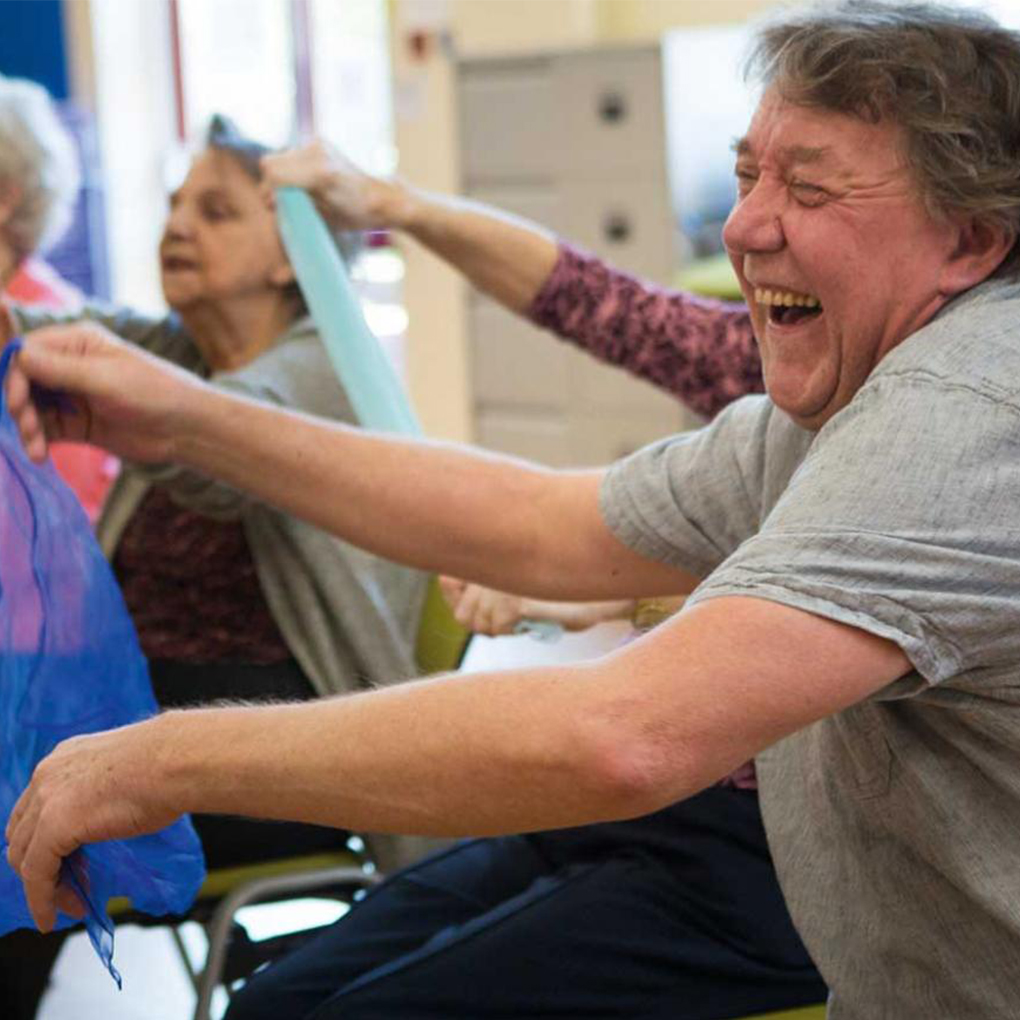on demand
the most flexible and affordable way to take part in dance to health
Pre-recorded content designed to help care home residents reduce falls

To access the content you’ll need:
Venue Requirements
A communal area with enough space for participants to dance.
Technical Requirements
A large screen TV connected to a laptop with WiFi.
Staff Requirements
A member of staff or volunteer at each site to encourage participants and to provide data e.g. weekly register of who attended and evaluation tests
The best value and most flexible way of delivering Dance to Health
The content has been produced specifically to develop participants’ strength and balance to prevent falls.
It’s fun! It can improve residents’ mood, encouraging positive behaviour.
A year’s subscription to Dance to Health On Demand costs £120. If you participate in 42 sessions throughout the year, it works out out at £2.86 per session.
You can play each session as many times as you want, when you want.
Key Information
What happens during a session?
A session will have 60 minutes of dance, choreographed by the dance artist. Each of our dance artists have their own, unique dance experiences and style which they will bring to the session
What evidence is there that the Dance To Health programme works?
Sport Industry Research Centre (SIRC) at Sheffield Hallam University was commissioned to evaluate of the Dance to Health. They found that:
– Dance to Health offers the health system an effective and cost-effective means to address the issue of older people’s falls.
– Dance to Health reduces falls by 58%
– If an older person visits A&E because of a fall, the likelihood of their becoming an in-patient is 35%. This reduces to 13% for Dance to Health participants.
Dance to Health’s fidelity to existing physiotherapy programmes was also confirmed.
As a result of Dance to Health:
– 96% of participants report becoming more physically active,
– 96% report increased mental wellbeing,
– 87% report making new friends.
– 98% of participants’ families and friends said they would recommend the Dance to Health programme to people who have fallen or who are at risk of falling.
What training do your Dance Artists have?
We recruit talented dance artists with experience of working with older people, in health and wellbeing programmes or inclusive dance.
They are trained in PSI (Postural Stability Instruction); a physiotherapy-based qualification that the NHS give to their physiotherapists. We then give them more training on how to incorporate the PSI into dance.
Do we need to provide an on-site staff member?
We recommend having a member of staff or a volunteer present at each session. They will be on hand to help participants should they need it and also to encourage involvement in the dancing, creating a fun, friendly atmosphere.
The member of staff will also take a weekly register of who attended the session and provide evaluation data to track strength and balance improvements.
Dance to Health is usually as much fun for the staff member as it is for the participants.
What are the Care Home communal site requirements?
– Accessible premises, particularly for people with disabilities
– Clean, temperature controlled and bright.
– Non-carpeted floor preferred – ideally a sprung wooden floor. If carpeted, the carpet must be fitted, the surface smooth and no rugs.
– Large enough to accommodate participants when dancing.
– Drinking water available during sessions.
– Refreshments at the end of sessions.
– A moveable chair available for each participant. Preferably hard-backed, with no arms.
– A large screen with video capabilities e.g. a laptop connected to a large TV.
– Internet access.
What do care home staff say about Dance to Health?
“Staff have noticed the decrease of falls in residents from starting Dance to Health. Those who join enjoy the music and one lady always gets up to dance holding onto her chair and is more stable doing so with each session.”
“The sessions are fun and energising, and dancing is what our residents love to do. During the pandemic when many older people were more isolated with limitations on physical activity, the Dance to Health team adapted and offered video sessions instead. This was a lifeline for some of our residents.”
“Barbara will often stay in her flat and not involve herself in activity, however Barbara has enjoyed interacting with Dance to Health Programme.”
“Molly will sometime struggle with mobility as legs get achy but since Dance to Health she seems to have gained strength in her legs.”
Contact Us to Find Out More
Please complete the information below if you would like a member of our team to contact you to discuss how Dance to Health can help.